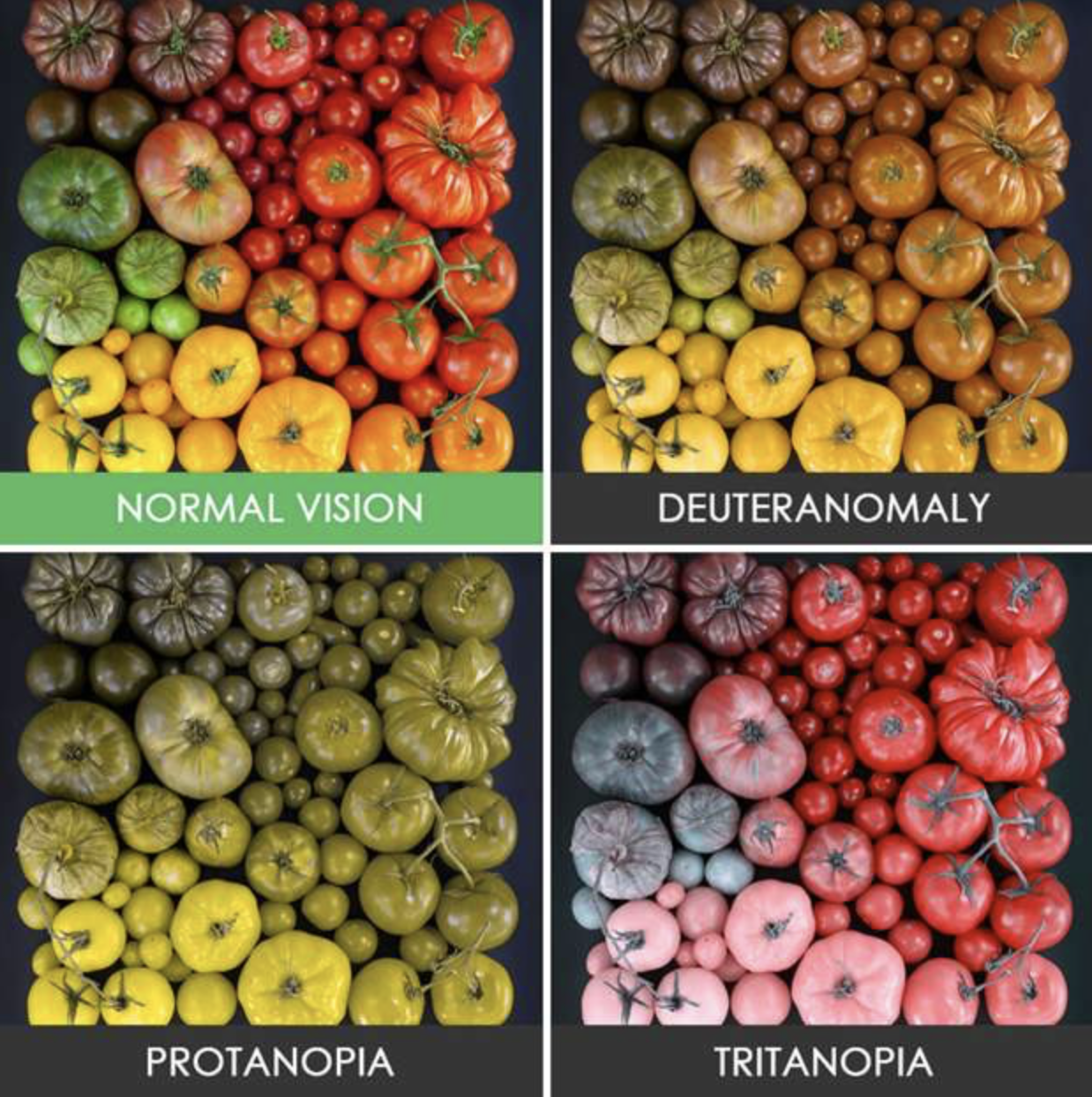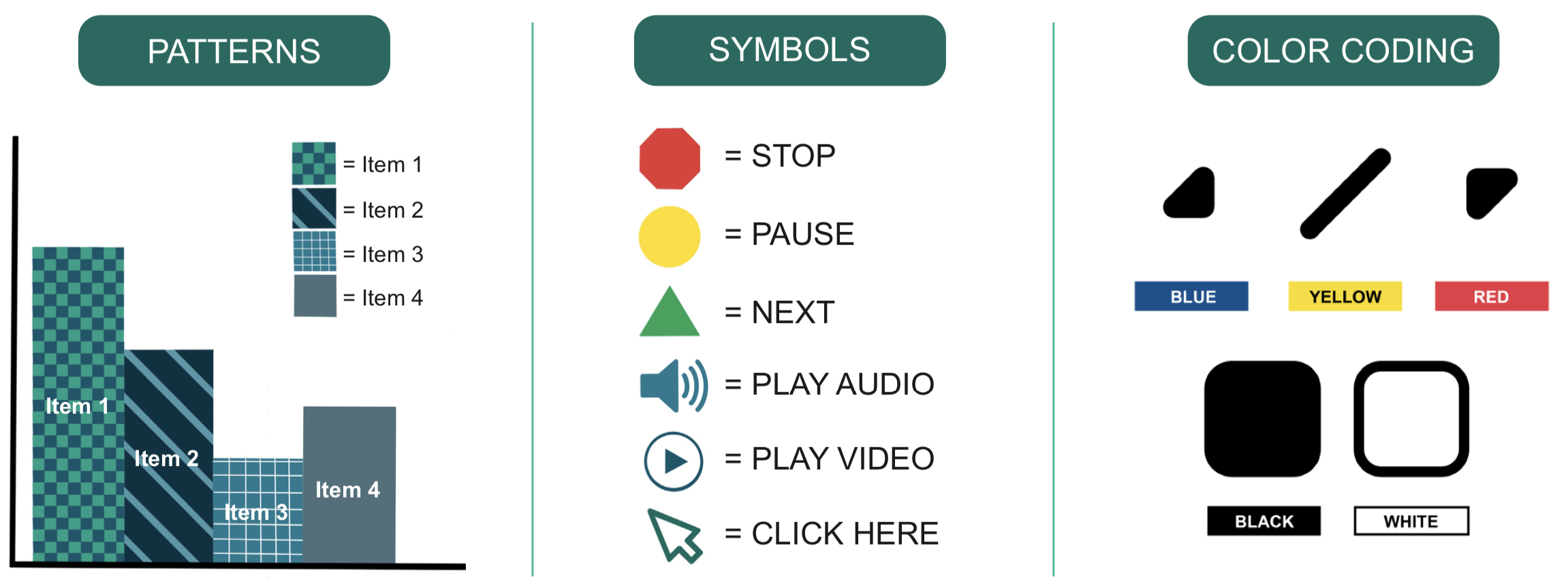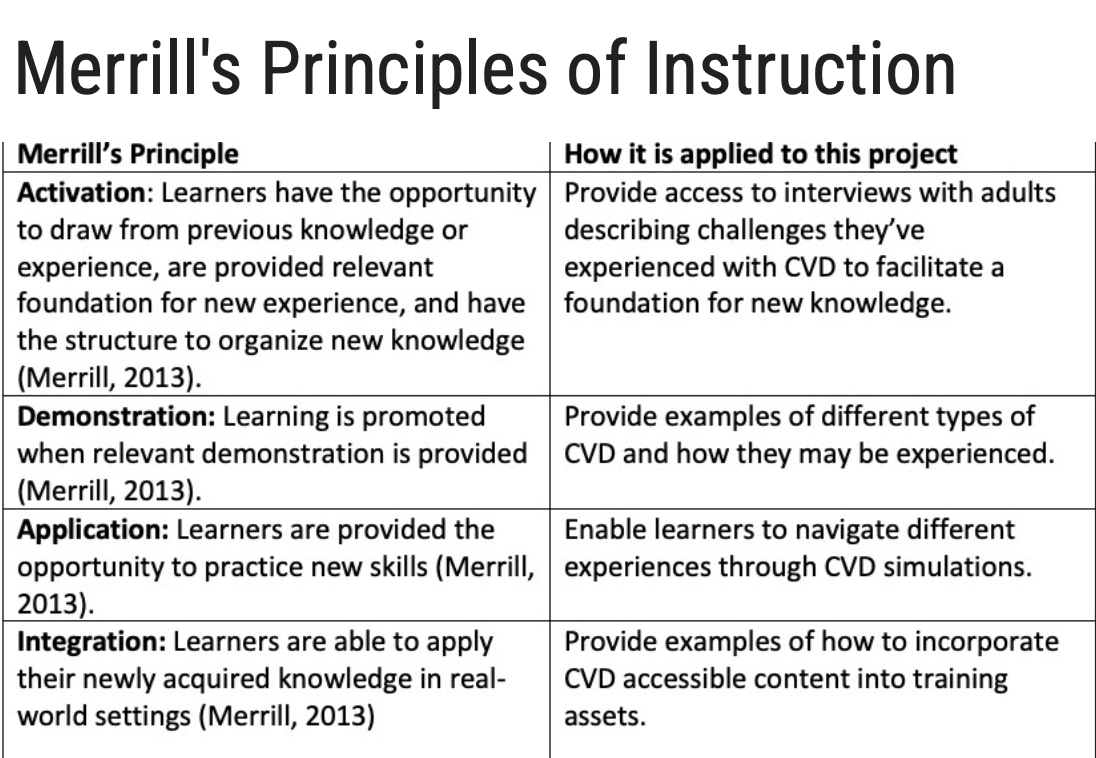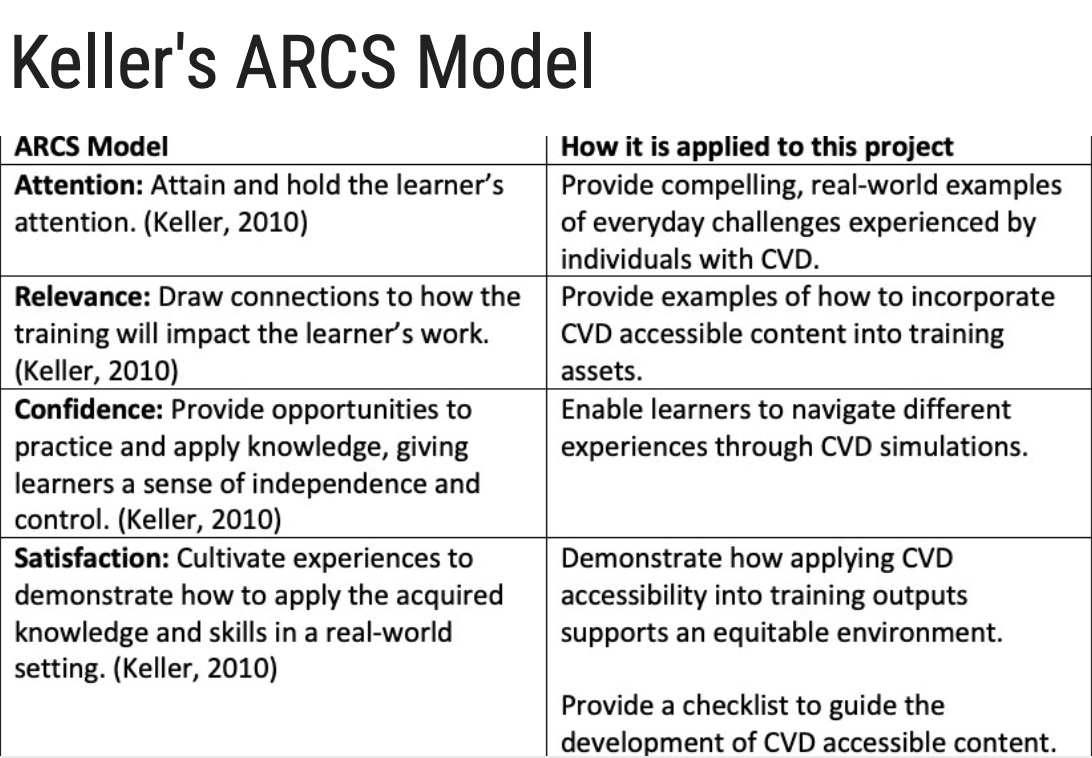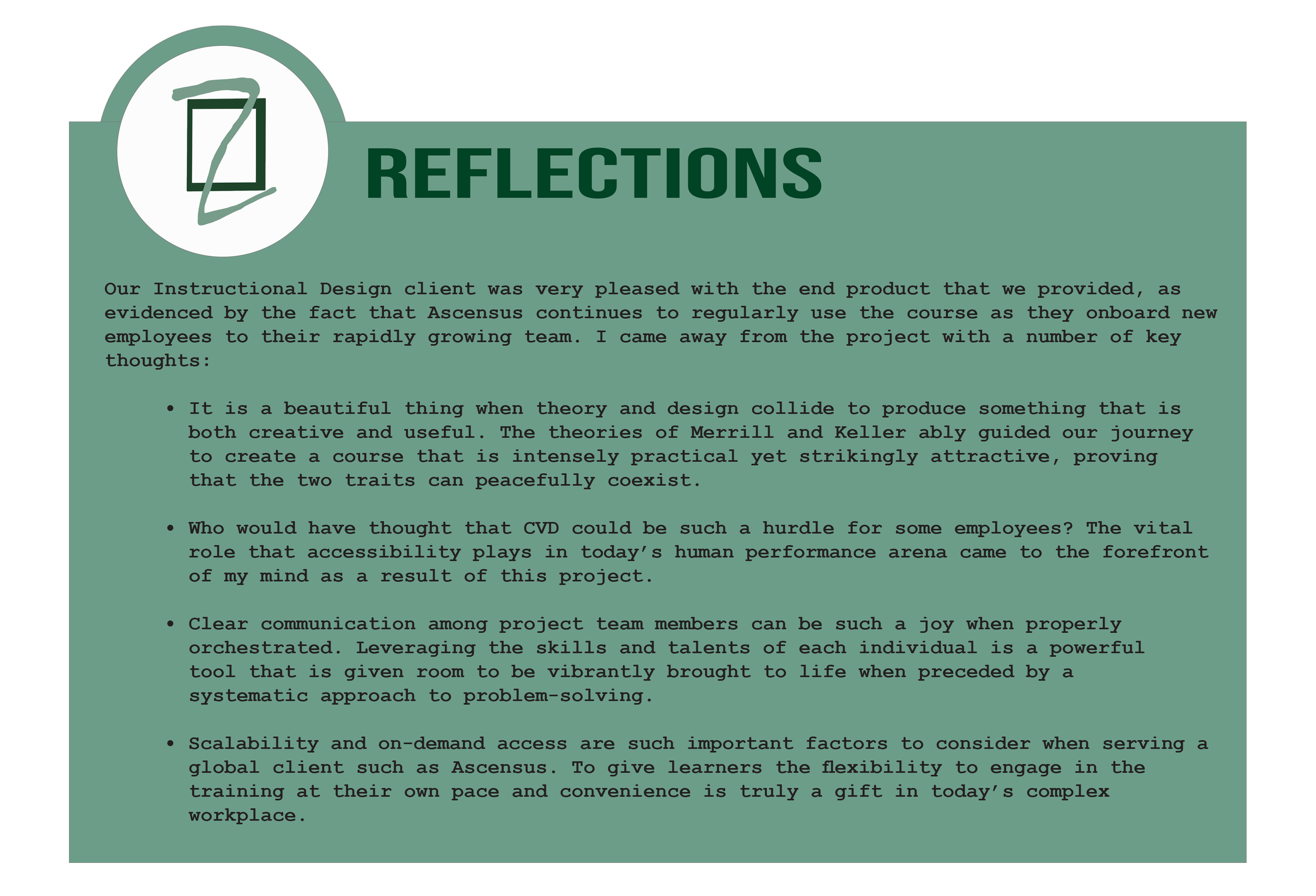WORK SAMPLE ONE
Enable Accessibility Accomodations for Associates with Color Vision Deficiency (CVD)
The full course with instructional materials can be found at the link below:
https://rise.articulate.com/share/Kkkj-urVr522tG3zie6ZC9TYtVYJyI9V
Challenge
Organization
Ascensus is an organization that provides and administers financial benefits for small and medium-sized businesses. The offerings include 401(k), Health Savings Accounts (HSA), Flexible Spending Accounts (FSA), 529 college savings accounts, and various state government pension plans. Ascensus employs ~6,000 people globally. Permanent employees are referred to as associates. The corporate office is in the Philadelphia, Pennsylvania area though there are offices throughout the United States and in India. Most associates in the United States work either remote or hybrid. Associates in India work in a physical office.The work centers around providing financial services for small and medium-sized businesses and some state government agencies.
Situation
The target audience for the training is the central Learning and Organizational Development (L&OD) team which consists of approximately 20 associates. This group handles all corporate-wide training initiatives, including leadership development, compliance training, risk management training, new associate orientation, and diversity and inclusion. The team also provides specialized job-specific, technical, and soft-skills training for several departments across the organization. The team consists of instructional designers, training facilitators, training project managers, organizational development experts, and L&OD leaders. Since many of the L&OD training programs are designed for the company-wide audience (6,000 global associates), it’s critical that they produce training outputs that are accessible to all members of the organization. One gap that was recently identified is associates that experience Color Vision Deficiency (CVD). The L&OD team was alerted to the gap when mandatory training was released to all 6.000 associates. One slide on the training requested that the learner “Press the red button to continue.” Some associates could not identify the color red and had difficulty completing the training and provided feedback to L&OD.
Goals
The L&OD wants to create and deliver accessible content but does not have the skill or knowledge to incorporate the needs of associates with CVD. The request is to provide training on CVD and how to incorporate CVD-friendly accessibility measures into all training initiatives. Several associates with CVD reported they were unable to complete mandatory training because it was not designed to be inclusive of associates with CVD. The issue was first identified in Q4 2022 when the training was launched. The number of associates that are impacted is unknown as the organization does not collect information about associates with CVD.
All associates in the organization are required to complete several security and compliance training sessions every year. If the training is not developed to accommodate those with accessibility needs, the organization will not be in compliance with the legal regulations. It also creates a negative environment for associates with accessibility needs and puts the company at risk for Americans with Disabilities Act (ADA) non-compliance and the associated potential legal ramifications.
The company is required to comply with various legal regulations including ERISA and HIPAA. Failure to do so puts the organization at risk for lawsuits and fines. The L&OD team is motivated to create content that is equitable, inclusive, and accessible to all associates, including those with CVD. The team that creates the content has a desire to make the training accessible but lacks the knowledge to know how to do so. Currently, the L&OD is producing new training content that is not aligned with CVD accessibility. The result is non-compliance with various regulations. The goal is to produce training content that is accessible to and inclusive of associates with CVD.
Solutions
The L&OD team needs to know what CVD is, how it impacts those with the condition, and how to design and deliver training that is accessible to the associates with CVD. The project team concluded that the solution includes training about CVD and how it impacts associates with the condition. An associated job aid or checklist provides guidelines on how to incorporate CVD accessibility into future training outputs. The decision to develop eLearning to address this performance gap instead of an instructor-led solution was motivated by a need for scalability and on-demand access.
Scalability: An eLearning solution can be shared with audiences throughout the organization. As the company continues to grow and new L&OD employees join the team, the solution may be incorporated into onboarding journeys. Though the training is developed to support the corporate L&OD team, it may be shared with the other learning departments and any groups that develop educational content for the target audiences.
On-demand access: Whereas instructor-led training requires learners to be present at a specific date and time, eLearning treatments are more learner-centric, providing access to the content at the time of need. An eLearning course is available at any time and may be accessed from a variety of platforms including laptop, phone, or tablet. This gives modern learners the flexibility to engage in the training at their own pace, during a time that works best with their individual schedules.
Approach
All training outputs should be compliant with CVD accessibility. The L&OD team should develop new training and redesign older training to comply with CVD accessibility standards. There are no intentional CVD accessibility measures currently incorporated into training assets. If they appear, they are entirely by accident. The gap may be increasing as the company has grown (added 1,500 associates in 2022). It is logical to assume that more associates will also mean that statistically more associates with CVD enter the organization. The more associates that are in the organization that experience CVD and are unable to complete mandatory training, the greater the risk the company will fall into non-compliance with various regulations.
Results
Fourteen members of the L&OD team completed the training. Ascensus leadership did not solicit nor receive feedback on the training course.The Enable Accessibility Accommodations for Employees with Color Vision Deficiency (CVD) course was delivered to all employees in the L&OD department. The L&OD team embraced the training and indicated they were surprised to learn about the challenges individuals with CVD face. They were motivated to review and update previously developed training content to make it CVD accessible. They also committed to incorporating best practices into any new education they develop.
Today, designing CVD-friendly training content is a standard and routine part of the instructional development cycle. The CVD best practices were integrated into the team’s accessibility checklist. When training is reviewed prior to launch, a team member is designated to verify that all outputs comply with the accessibility checklist. The training was also shared with other L&D teams in the organization and they are actively adopting the accessibility checklist as well.
References
Keller, J. M. (2010). Motivational design for learning and performance: The ARCS model approach. Springer.
Merrill, M. D. (2013). First principles of instruction: Identifying and designing effective, efficient, and engaging instruction. San Francisco, CA: Pfeiffer.
Turbert, D. (2022, September 26). What is Color Blindness? Retrieved September 2024, from American Academy of Opthalmology: https://www.aao.org/eye-health/diseases/what-is-color-blindness

